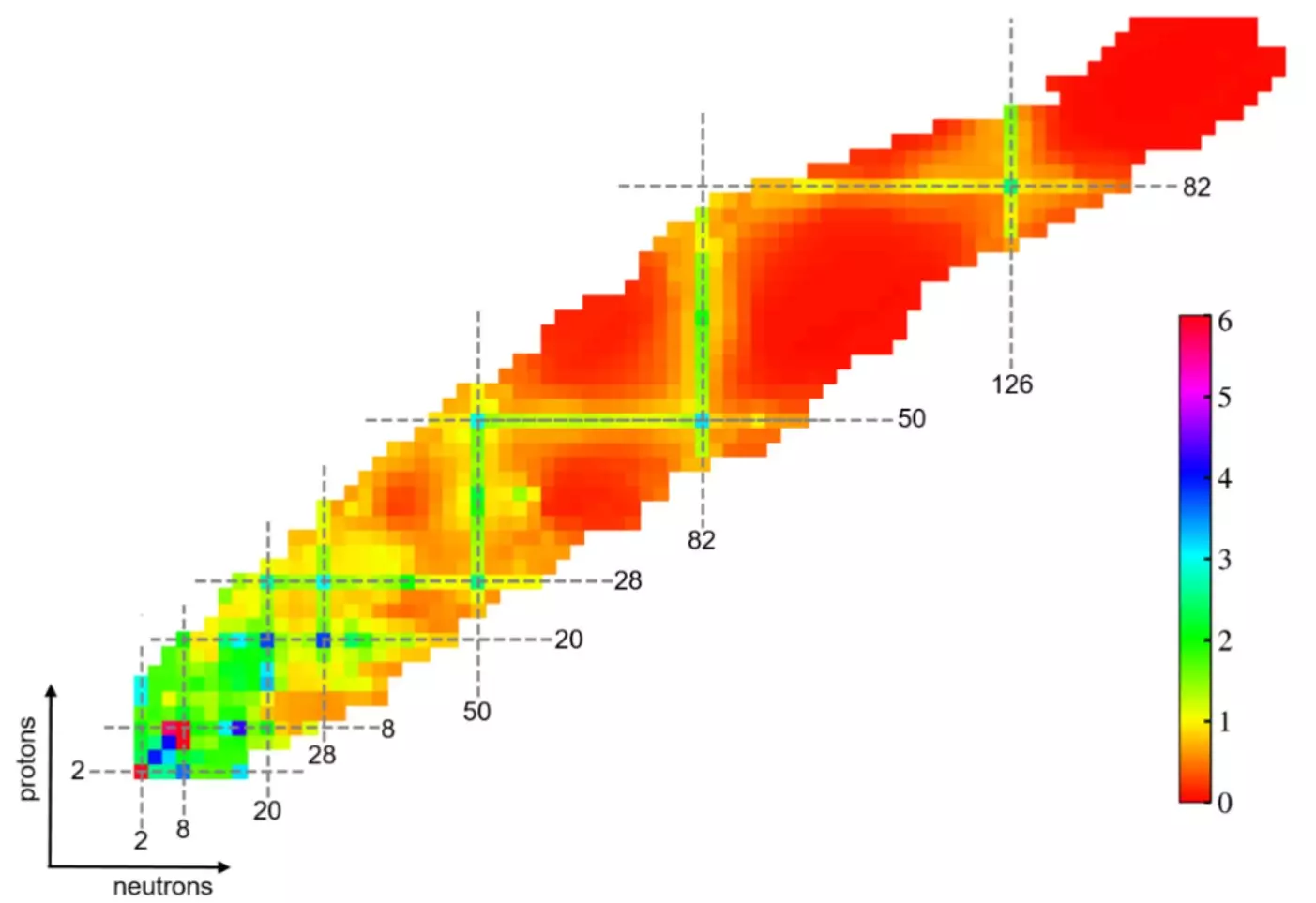Recent advancements in nuclear physics have prompted researchers to rethink the nature of atomic nuclei, particularly as they relate to magic numbers. These magic numbers—specifically the counts of protons and neutrons that lend stability to the nucleus—have long been considered a fundamental aspect of nuclear structure. A groundbreaking study, led by a collaborative research team from the Institute of Modern Physics (IMP) of the Chinese Academy of Sciences, Huzhou University, and the University of Paris-Saclay, harnesses machine learning to investigate the evolutionary patterns of these numbers, particularly in nuclei straying from stability. This article aims to dissect the findings and implications of their research.
Magic numbers serve as benchmarks in the nuclear landscape. Historically, stable configurations of protons and neutrons appear at numbers such as 2, 8, 20, 28, 50, 82, and 126. The idea of magic numbers emerged in the 1930s and has deep roots in the shell model of the nucleus, suggesting that these specified counts lead to particularly stable configurations. However, as nuclei venture away from the so-called “stability valley,” questions arise regarding the universality of these magic numbers.
“This study interrogates the existence and potential evolution of magic numbers within unstable nuclei,” stated Lyu Bingfeng, an associate professor at IMP and one of the lead authors of the study.
The Role of Machine Learning in Nuclear Physics
Machine learning, a powerful computational tool, is making significant inroads into fields ranging from medicine to physics. In this study, researchers employed machine learning algorithms to analyze complex experimental data relating to nuclear shell structure, specifically focusing on low-lying excited states and their electromagnetic transition probabilities. The study’s methodology emphasizes the adaptation of machine learning to improve precision in predictions about nuclear stability.
Wang Yongjia, a fellow researcher from Huzhou University, mentioned, “We leveraged numerous features of atomic nuclei to achieve unprecedented accuracy in predicting experimental outcomes. Our results surpassed those generated by previous nuclear models and current machine learning techniques.”
Unveiling New Findings: Oxygen-28 and Tin-100
The research revealed key insights into the behavior of two specific nuclei: oxygen-28 and tin-100. Notably, the findings led to the conclusion that the traditional neutron magic number 20 no longer applies to oxygen-28. This is particularly significant as it challenges long-held beliefs about the universality and permanence of magic numbers. Conversely, they found that tin-100 retains the magic number 50, providing a comparative framework for understanding the structural integrity of nuclei within and beyond the stability paradigm.
These observations raise intriguing prospects for the classification of nuclei and suggest that exploring extreme environments—such as those found in heavy-ion collisions—could yield new insights about nuclear behavior.
This study provides a fertile ground for further research in nuclear physics, as the diminishing relevance of certain magic numbers and the stability of others prompt a reevaluation of nuclear models. The precise predictions yielded by machine learning not only hold potential for revitalizing theoretical frameworks but also establish a pathway for experimental exploration.
The researchers argue that their findings could shine a light on future experimental efforts utilizing rare-isotope facilities, such as China’s High Intensity Heavy-Ion Accelerator Facility. “We anticipate that our work will guide subsequent measurements of nuclear properties globally,” said Lyu Bingfeng, indicating a broader ambition to refine our understanding of atomic nuclei.
Conclusion: Bridging Theory and Experimentation
The integration of machine learning into the study of nuclear physics marks a significant step forward in understanding the complexities of atomic nuclei. The elucidation of new dynamics surrounding magic numbers challenges existing paradigms and sets the stage for further discovery. As ongoing research unfolds, the potential for novel theoretical models will be shaped significantly by these empirical feats, ultimately enriching our comprehension of the intricate world of nuclear matter. The unfolding narrative surrounding magic numbers is just beginning, fueled by technological innovation and collaborative engagement across scientific disciplines.


Leave a Reply